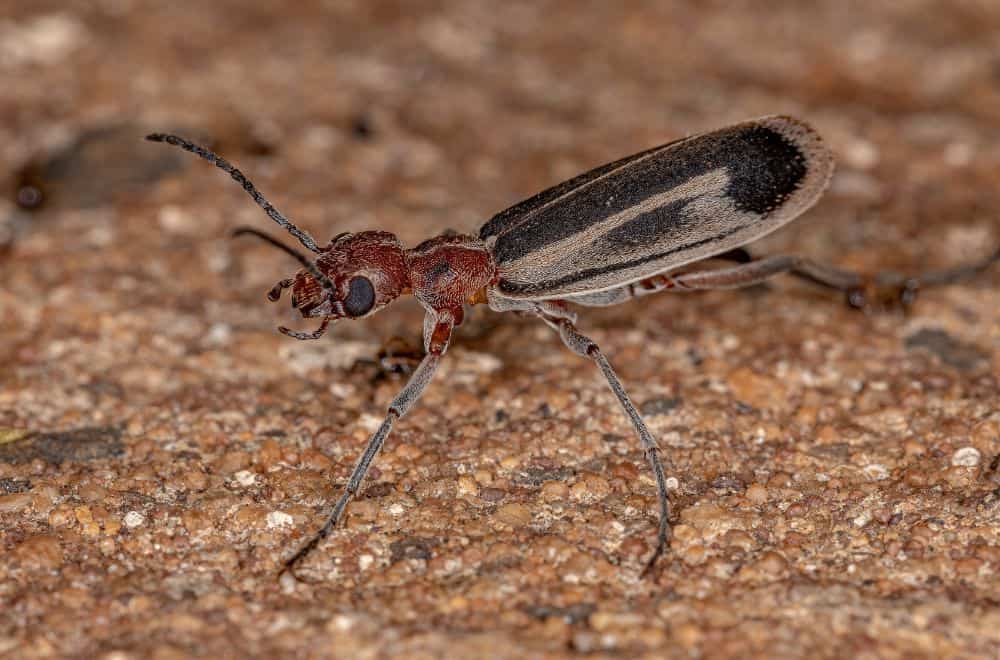Arizona is known for its fantastic weather and fabulous resort spas. But, the Grand Canyon State is also prone to critters, bugs, and reptiles due to the warm weather.
Whether you are a native or new to the state, you will definitely encounter Arizona bugs that bite at some point. You might not even see or know what has bitten you but the prospects of insect bites are high.
This doesn’t mean death lurks underneath each rock, garden, or patio. Not all biting insects in Arizona are lethal or mildly harmful to humans. But it helps to know what critters you are up against and what you can do in case of a bite.
Read on for everything you need to know about bugs that bite in Arizona.
Arizona Bugs That Bite
1. Fire Ants
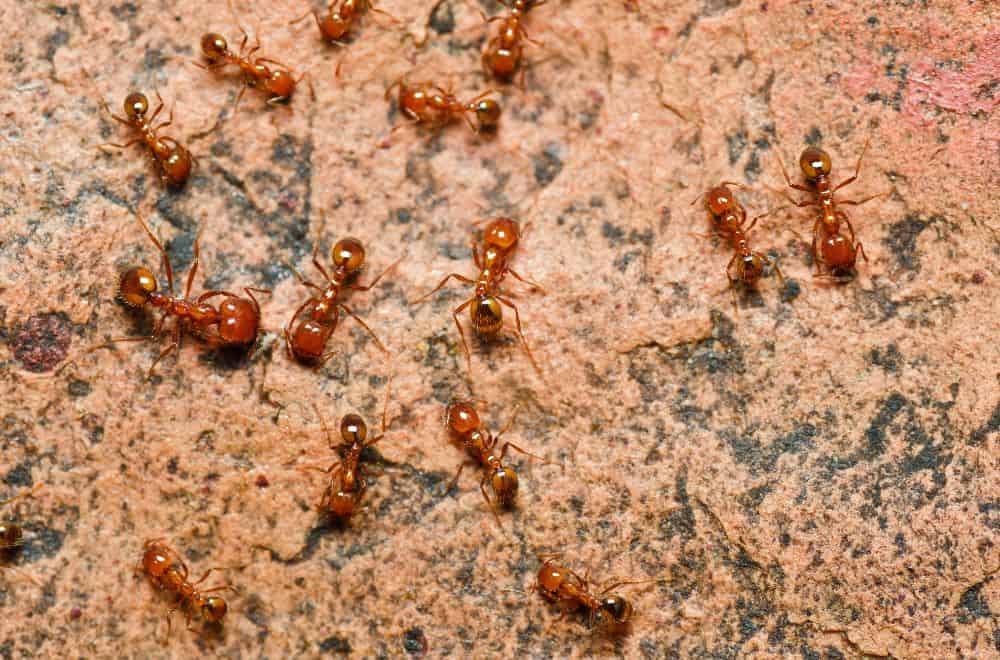
Arizona is home to many types of fire ants but the red imported and native fire ants are by far the most common. These two ants render a painful bite, requiring medical attention in case of a severe allergic reaction.
These critters are reddish-black and measure about one-eighth of an inch long. They build their nests and live in colonies in gardens, parks, yards, lawns, and gold courses. Arizona fire ants are attracted to warm, moist, irrigated soil.
Fire ants cohabit and move in colonies and can be extremely aggressive. They increase in numbers when they stumble upon an aggressor or predator as a way to defend themselves.
When triggered, these ants inflict multiple bites, clinging to the skin and injecting their venom. Fire ant bites are very painful and quickly result in raised, itchy lesions.
2. Spiders
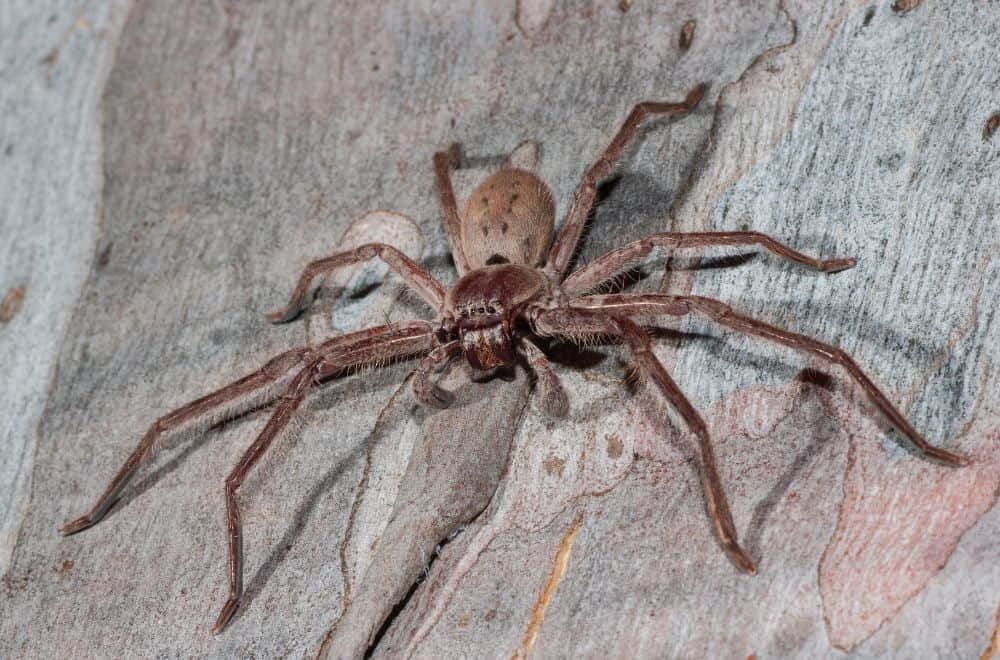
The brown recluse and black widow spiders are Arizona’s most common and deadliest spiders. These venomous arachnids live in dark corners of closets, attics, basements, cupboards, bed skirts, and piles of wood left unattended.
These spiders will not pursue you but may bite if you disturb them, and they feel threatened. When pressed close to your skin, the black widow and recluse spiders inject venom into your blood system, resulting in mild to moderate reactions.
According to Healthline, the venom from spider bites can cause symptoms such as dizziness, fever, nausea, itchiness, and inflammation around the bite area. You should seek medical attention if you suspect a spider has bitten you and is causing adverse symptoms.
3. Blister Beetles
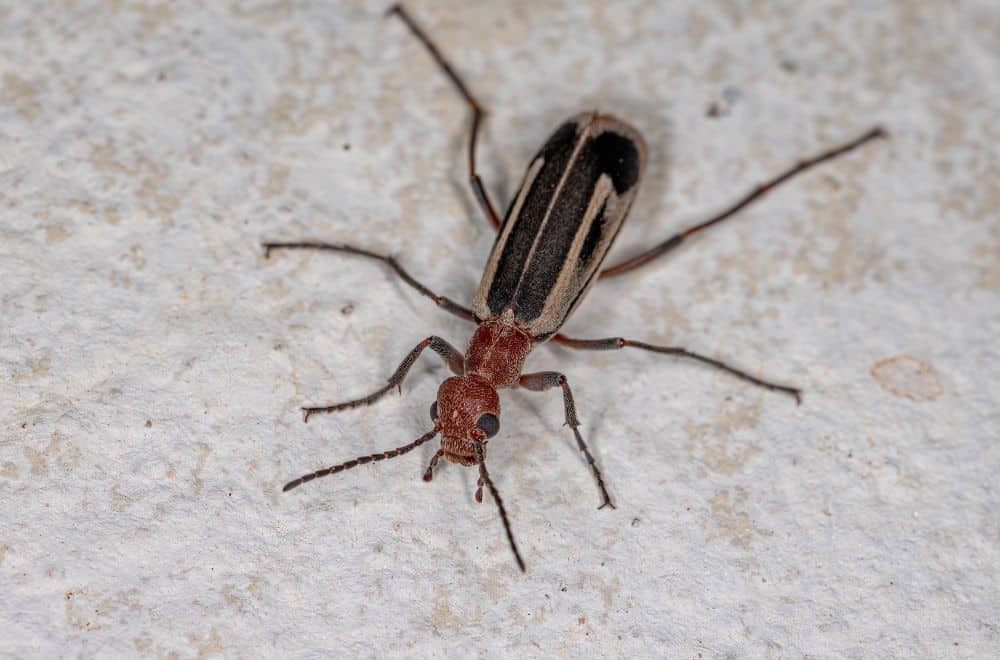
There are over 150 blister beetle species in Arizona. These bugs play an ecologically important role, but they can also destroy plants and may pose a danger to humans and animals.
Blister beetles secrete cantharidin, a toxic chemical they use as a defensive mechanism when threatened. Cantharidin can cause serious illness and sometimes death if ingested in adequate quantities.
This particular beetle species is found in different colors, but like all other beetles, the blister beetle has a wide head and an equally wide elytrum.
In Arizona, blister beetles are most active in spring, fall, and summer. Once it bites, the bug causes blistering, itchiness, and inflammation around the bite area. In severe cases, blister beetle venom can cause a urinary tract infection.
4. Conenose
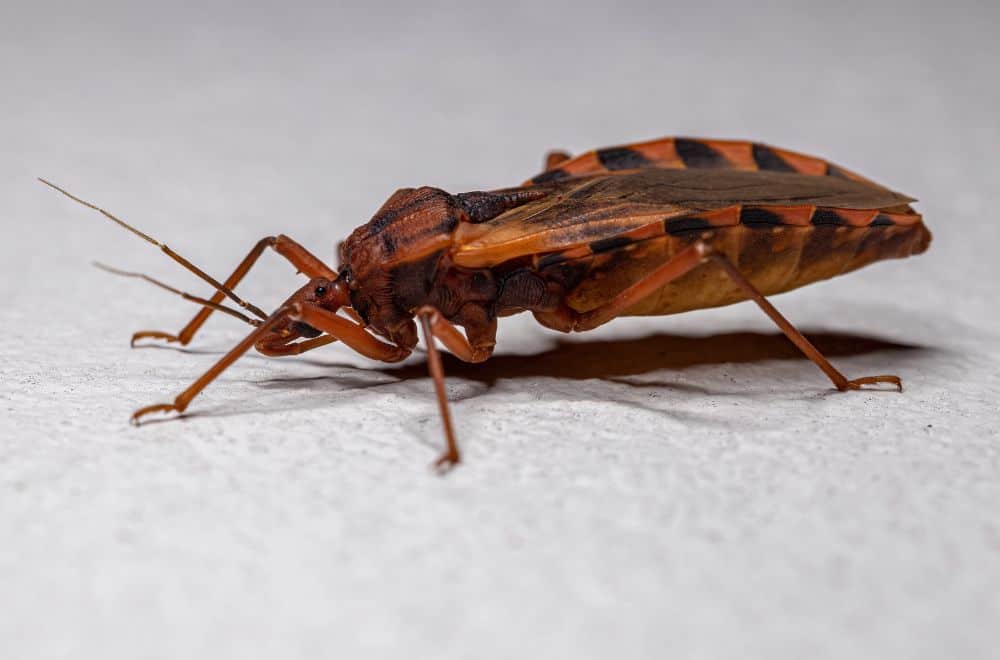
Conenose are 1-inch log bugs with blackish-brown wings and orange, red, or yellow stripes along the body’s edge. Also known as kissing bugs, these insects are active at night and feed on the blood of humans and animals. They thrive in late spring and early summer.
They are known as kissing bugs because they typically bite on the face, specifically around the eyes and mouth. They also go by Hualapai tigers, bloodsuckers, and assassin bugs.
Like mosquitoes, conenose bugs will bite at night but you will probably not notice the small bites as they are typically painless at first. Later, bites left on the feet, arms, face, and head may begin to itch, swell and leave a scar that can take days to heal. In some serious cases, conenose bites can cause breathing difficulty and low blood sugar.
These bugs are active at night and most prominent in late spring and early summer. Seek immediate medical attention in case of severe allergic reactions. According to WebMd, about 7% of people develop severe reactions, ending up in anaphylactic shock when bitten by conenose bags. So if you are allergic to bug bites, you should consult your physician immediately if you suspect a bug bite.
5. Termites
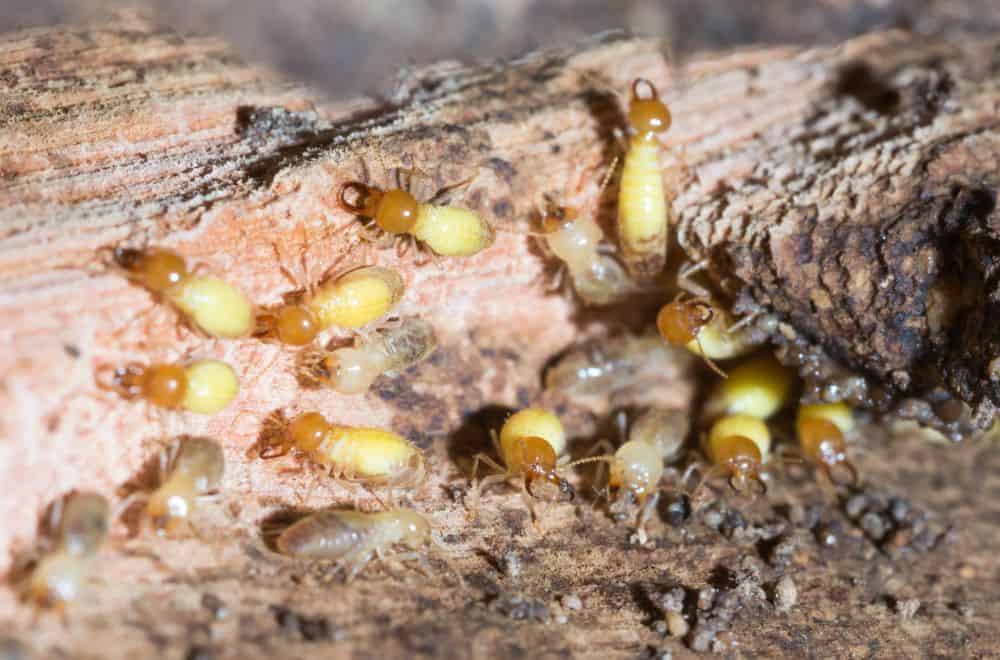
Termites are not only notoriously destructive; they can also land a sharp bite, leaving you itchy and inflamed.
The most common termites in Arizona are the subterranean and dry-wood termites. The underground type burrow holes into the ground and build extensive mud tunnels where they live and shelter. Drywood termites burrow into wood, cardboard, and suitable organic material.
Termites rarely seek out humans and they rarely bite. But subterranean termites, like most other species, swarm in large colonies and can bite if you are on their way. Children and small pets are most at risk of termite bites.
You will probably not notice a termite bite, given these bugs have extremely small jaws. If you suspect a termite bite, look for redness, itchiness, pain, irritation, or inflammation.
You should see a doctor if symptoms persist, especially in young children and others prone to opportunistic medical reactions.
6. Blister Beetles
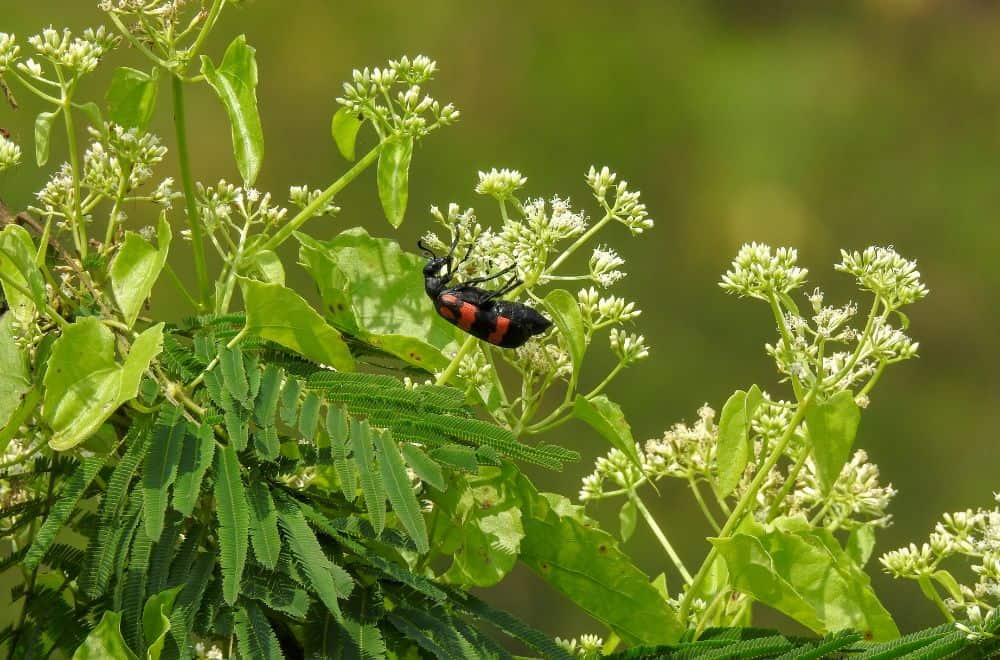
Blister beetles have long, narrow bodies and come in various colors, from gray to yellow. While they are very common in Arizona, they are not a major concern to most people until you develop blister beetle dermatitis from this common bug.
Blister beetles have very small jaws and lack stingers, so they neither bite nor sting. The blisters result from contact with the bug, producing a toxic substance called cantharidin. Cantharidin can cause painful, itchy blisters on any part of the body the beetle crawls on, including the legs, arms, skin, neck, and face.
7. Chiggers
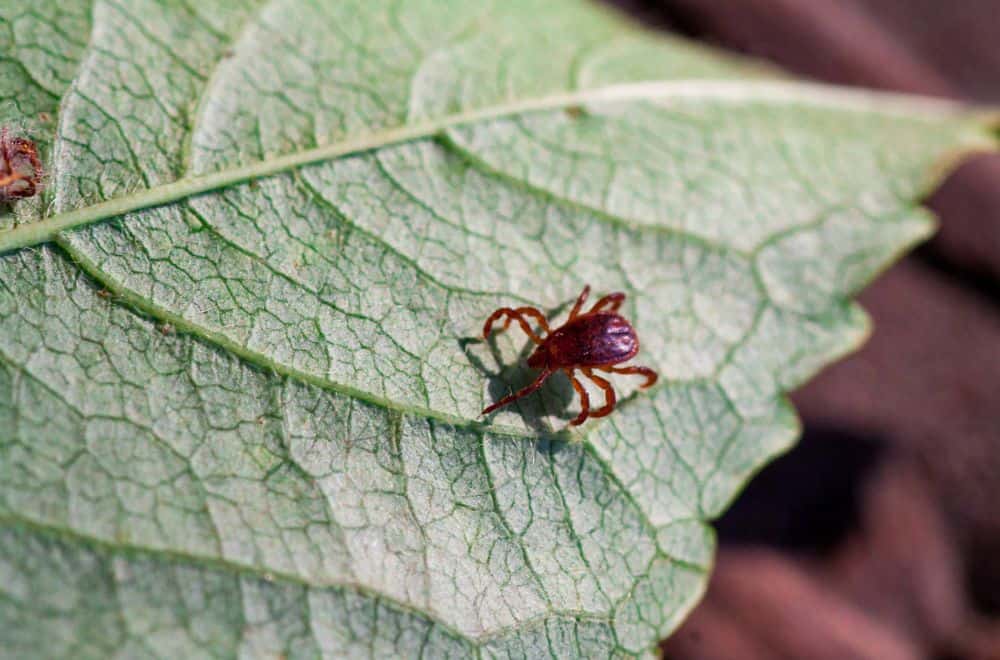
Chiggers are closely related to spiders and ticks as adults develop eight legs. These common bugs in Arizona are red in color and most active in the spring, late summer, or early fall when grass growth is most prolific.
Chiggers hang out on top of the grass and jump on humans and animals when the opportunity arises. Although chiggers prefer insects, rodents, and birds, they also latch on to humans. These bugs will mostly attack the ankles, waistbands, armpits, and behind the knees, holding onto the skin and injecting saliva.
Contrary to popular belief, chiggers feed on skin cells, not blood. You can take precautions against chigger bites outdoors by applying insect repellent on your skin and clothing around areas prone to bites and reapplying as often as needed.
Wear well-fitting clothes, preferably long pants, sleeved shirts, and high boots. After a day in the outdoors, be sure to wash away any chiggers that may still be clinging to your skin and clothes.
Chigger bites itch because of a chemical the bug releases known as stylostome. After a bite, your skin will itch until the stylostome breaks down and is absorbed into your body. Try not to scratch chigger blisters, which can result in secondary infections.
8. Brown Dog Ticks
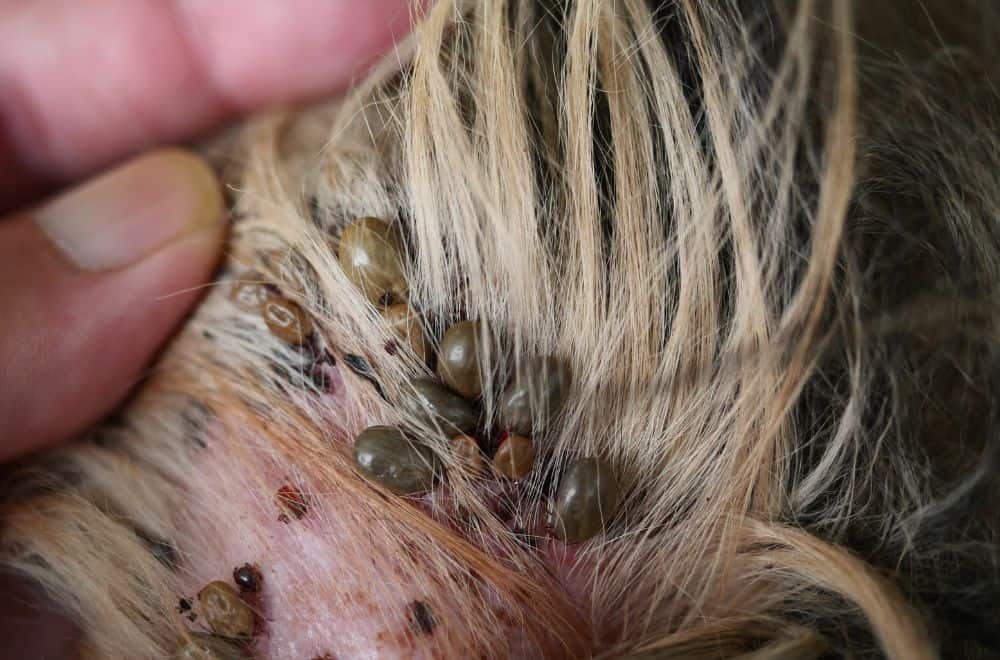
The most common type of tick in Arizona is the brown dog tick, which lives in warm places and preys on dogs. Brown dog ticks can also migrate from the dog and latch onto human skin.
These bugs are tiny, measuring around 1/8 inches long but their length can increase slightly after feeding on a blood meal. They also change color after feeding from reddish brown to grayish blue.
After feeding on its host’s blood, adult brown ticks lay eggs in dark corners, where dogs pick up the tick larvae.
Tick bites can spread Rocky Mountain Spotted Fever, whose symptoms include rash, fever, headache, and joint pain to mention a few. If you experience these symptoms, especially after handling a dog infested with brown ticks, it is important to seek medical treatment immediately. This disease can be fatal if not quickly diagnosed and treated.
In terms of first aid, you can remove dog ticks immediately after you notice them on your skin. A tick transmits disease after several hours of latching on to its host so removing it from your skin as soon as possible minimizes the chance of an infection.
9. Fire Ants
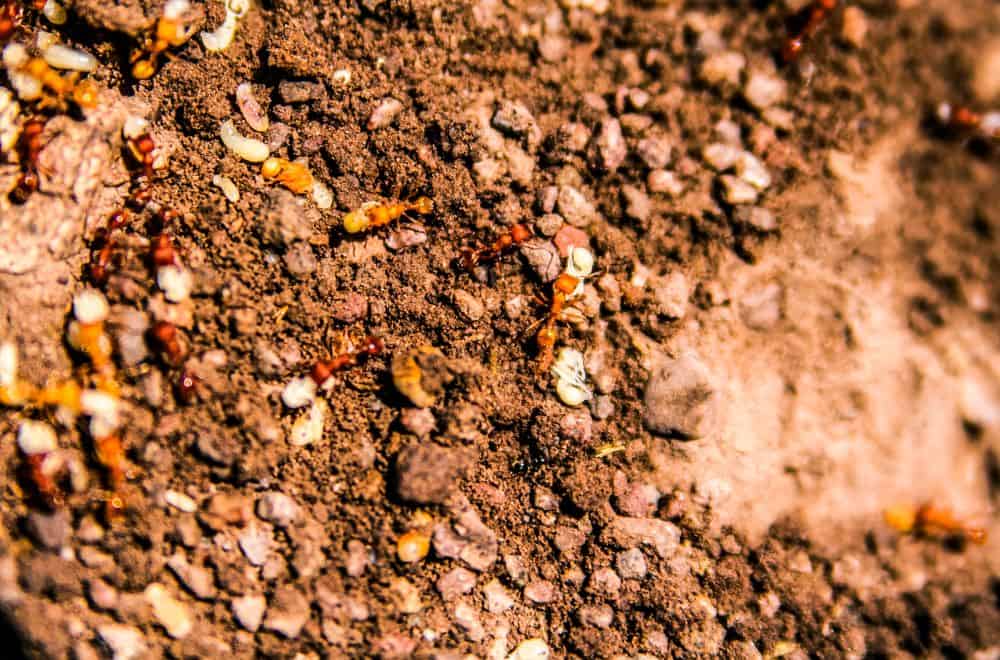
Native fire ants are the most common ant type in Arizona. They are common in yards and some residential gardens, but they can also land you a serious bite.
A fire ant’s bite is sudden and sharp but its venom is only mildly dangerous. The venom consists of piperidines, alkaloid compounds that are extremely toxic and can alter the normal activity of nerves, cause cell damage, destroy red blood cells, and result in tissue damage.
In addition to native fire ants, Arizona is also home to red imported fire ants, which are far more aggressive and quickly sting when they feel threatened. Fire ant bites physically manifest as pseudopustules or blisters with tissue serum.
10. Mosquitoes
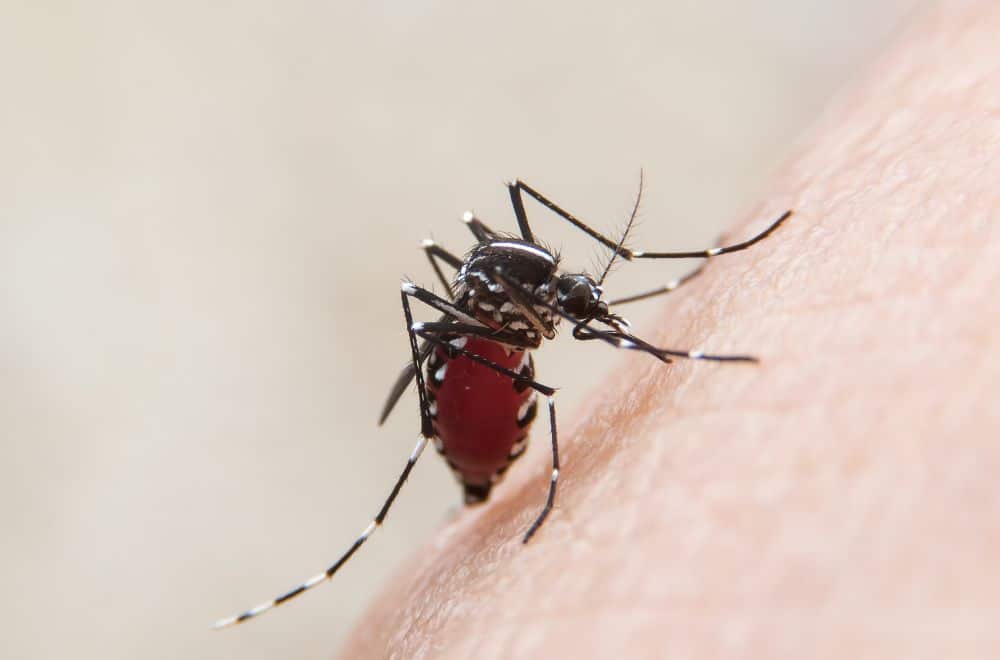
Arizona has over 40 mosquito species, but only six or seven spread severe disease. Mosquitoes render an itchy bite and are most active in summer and early fall.
In Arizona, mosquitoes can transmit the West Nile virus, which causes West Nile fever in birds, animals, and humans. Mosquitoes and birds are the preferred hosts for the virus, with mosquitoes contracting the virus from feeding infected birds. While animals can contract West Nile virus, the symptoms are more severe for humans.
Making your immediate environment inhospitable to mosquitoes can reduce the chances of bites from this common but dangerous bug. Eliminate stagnant pools of water whether that’s a pond, idle containers holding water, vehicle covers that can hold water, or even a neglected swimming pool.
Eliminate adult mosquitoes using pesticides and traps. Install door and window screens and apply insect repellent when outdoors.
11. Scabies Mites
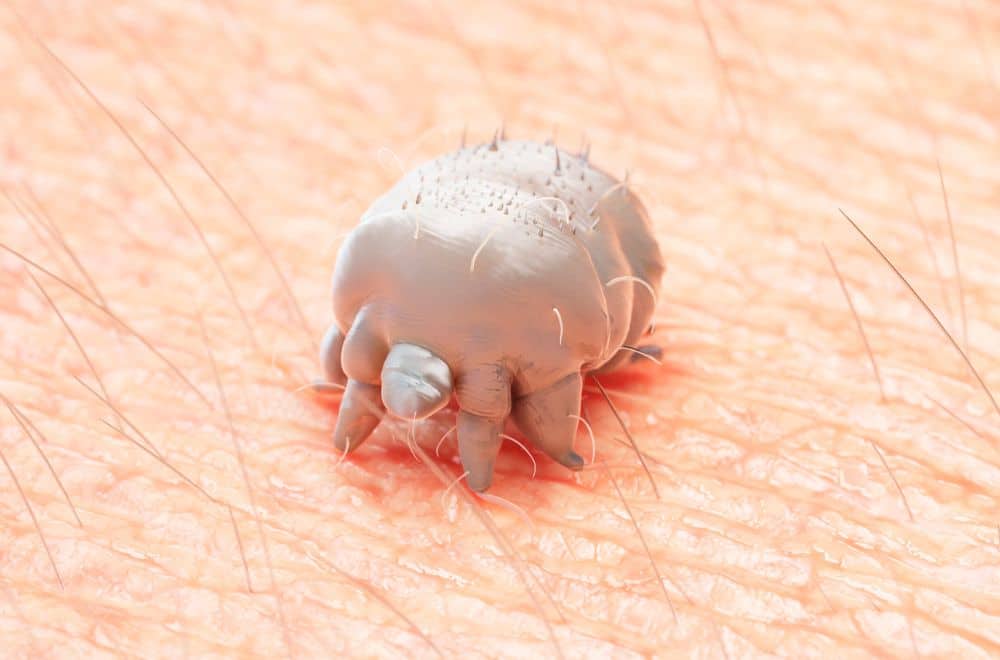
Scabbies mites, also known as human itch mites or scientifically as Sarcoptes scabiei, cause an itchy skin rash that is contagious upon close contact with infected persons.
The mite burrows into the human skin where it lays eggs, leading to intense scratching followed by an angry rash. The scratching typically intensifies at night.
Although highly contagious, scabies is easily treatable using medicated creams and pills. The goal of treatment is to kill the mites and their eggs, eventually alleviating the itching over a few weeks.
12. Scorpions
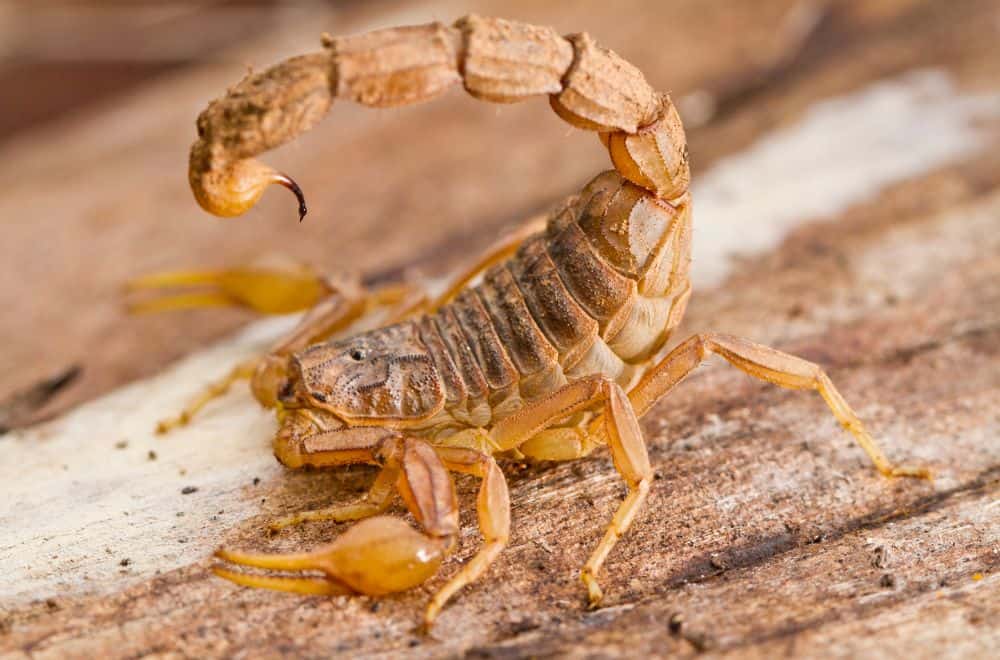
Scorpions may seem like exotic critters, but they are extremely common in Arizona. There are more than sixty species in the state but the bark scorpion, scientifically known as Centruroides sculpturatus is the most aggressive.
Typically found under rocks and in tree crevices, the bark scorpion measures up to 3 inches long and may live in colonies of 20-30. These critters produce an extremely acute venom that can cause muscle twitching and numbness and in extreme cases can lead to convulsions, breathing difficulties, and paralysis. No cases of death have been reported in Arizona in recent times.
A large population of bark scorpions poses a danger to humans and pets and it is best to proof your home against these bugs. First, remove any possible habitat around your house, such as stones, rocks, piles of wood, and trash. It would help to keep your grass trimmed and bushes pruned to eliminate potential scorpion-hiding spots. You can also fill weep holes, maintain door and window screens, and repair roof eaves, cracks, and any broken pipes where scorpions can hide and attack suddenly.
FAQS About Arizona Bugs That Bite
Do bugs bite in Arizona?
Arizona, especially the Phoenix area is prone to bugs due to its warm climate. There are plenty of biting bugs in the state but most are not deadly and will only cause mild reactions such as itching. That said, some bugs such as mosquitoes can cause serious illness when they bite.
Why do I get so many bug bites in Arizona?
Insects like a warm, moist, and comfortable environment, and the pleasant Arizona weather is perfect for bugs to thrive in. Compared to other cooler states, Arizona’s warm climate attracts all kinds of insects and critters, making it difficult to escape bug bites in the Grand Canyon State.
What is biting my ankles in Arizona?
Chiggers or Aedes albopictus mosquitoes are the likely culprits when it comes to ankle biters in Arizona. The mosquitoes bite all day and roam around your ankles, leaving small, red bite marks. Chiggers, on the other hand, are also active during the day but will feed on skin cells as opposed to blood.
